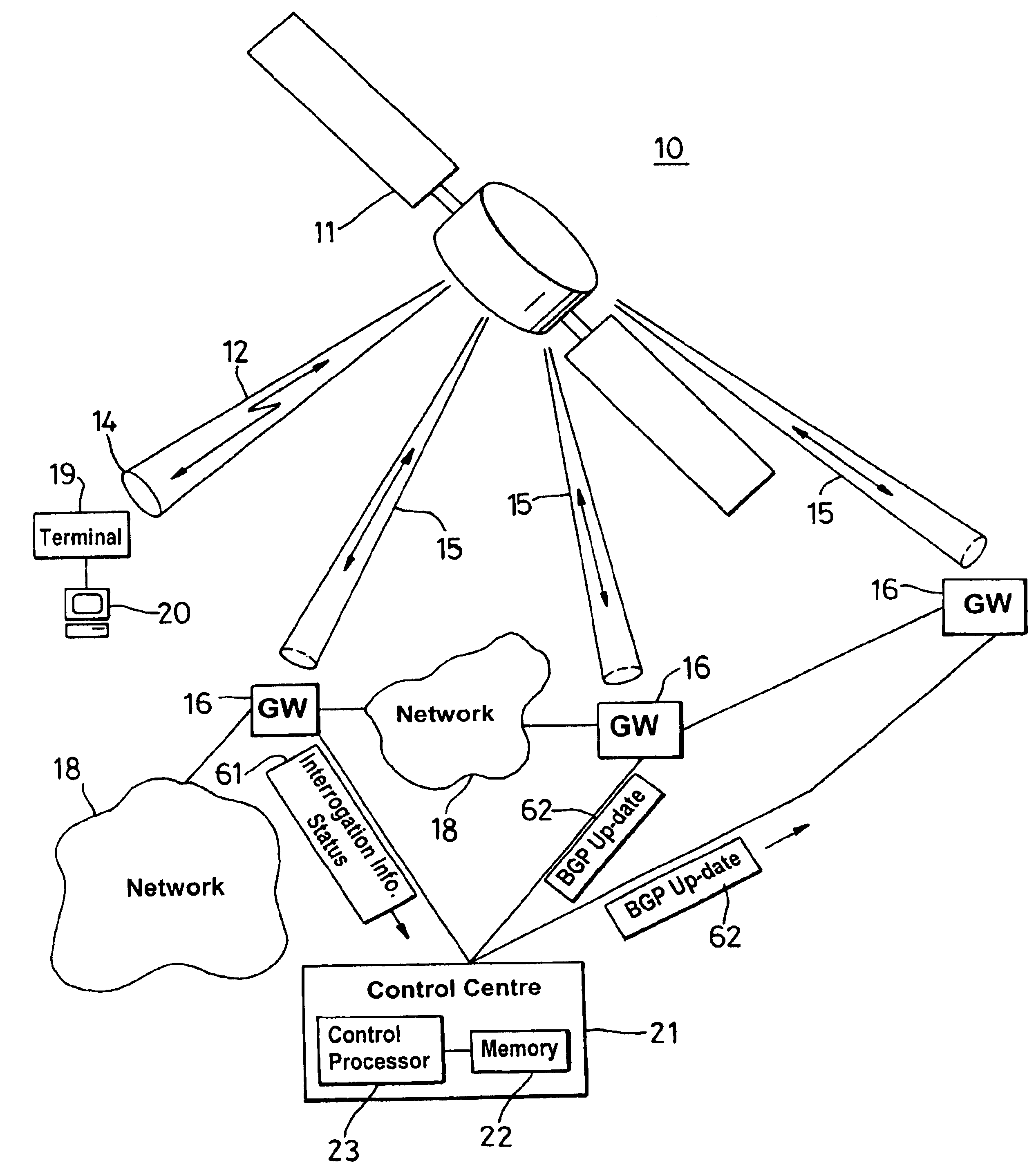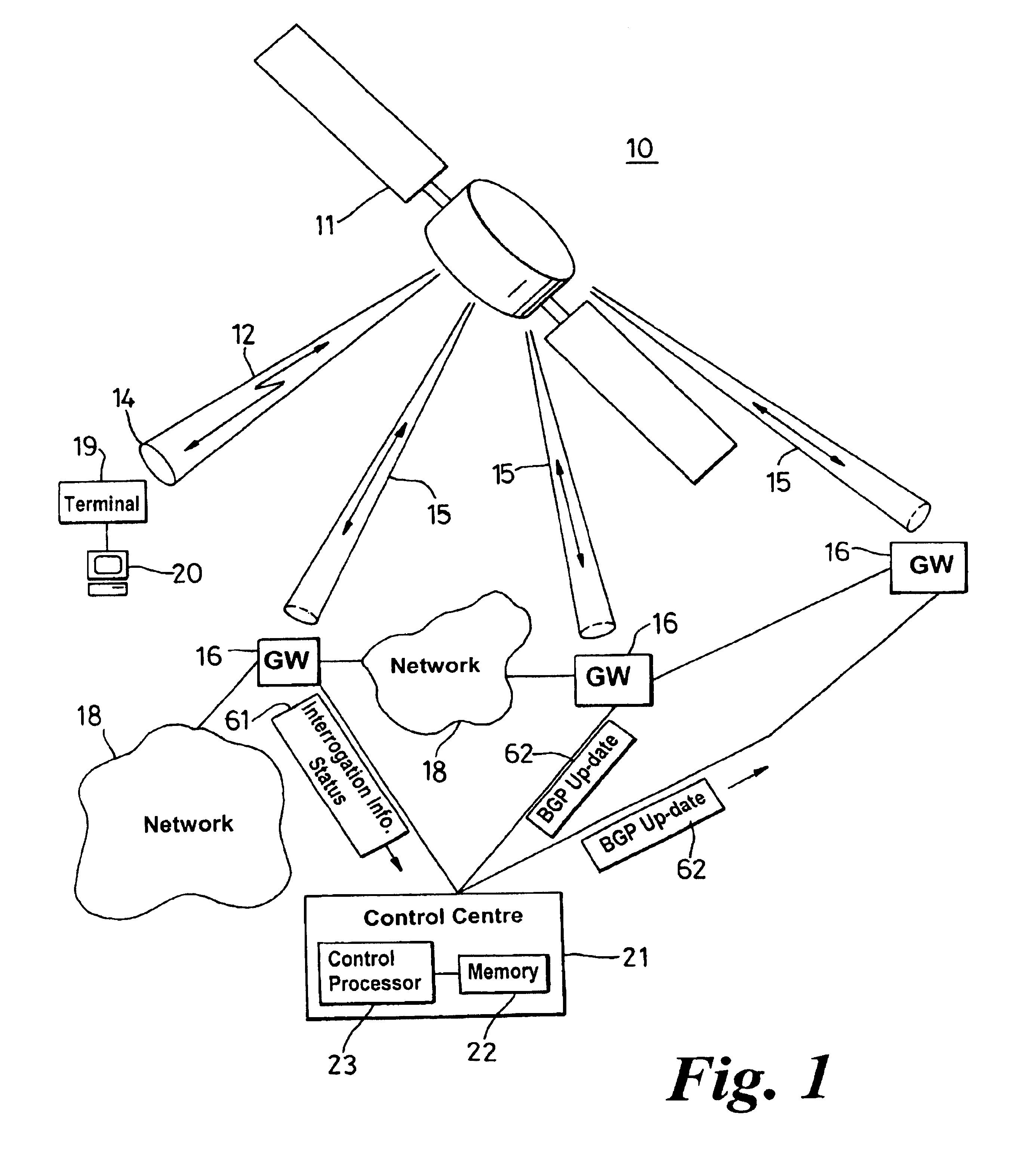Border gateway protocol manager and method of managing the selection of communication links
a protocol manager and communication link technology, applied in the field of border gateway protocol manager and method of managing the selection of communication links, can solve the problems of not being able to determine the optimal, different systems to realy, and not being able to fully appreciate or address the problem of providing full interworking
- Summary
- Abstract
- Description
- Claims
- Application Information
AI Technical Summary
Benefits of technology
Problems solved by technology
Method used
Image
Examples
Embodiment Construction
FIG. 1 illustrates a satellite-terrestrial communication system 10 adapted to support the concepts of the various embodiments of the present invention. A satellite network 11 has several bi-directional user beams 12 (of which only one is shown) each providing an area of coverage 14. Since the satellites of the preferred embodiment are in geo-stationary orbit, the coverage areas are geographically fixed. Bi-directional service conduits (i.e. gateway beams) 15 provide communication paths to a gateway 16. Multiple gateways could be provided by each service conduit if desired. Each gateway provides an access point to the terrestrial network 18 (of which there could be many within the system 10), with each terminal 19 providing satellite accessibility to data devices 20, such as computers. In a preferred embodiment, the terminals 19 may be IP passive edge routers. In a preferred embodiment, the terminals 19 may be IP passive edge routers. Each terminal 19 is therefore part of the IP subn...
PUM
 Login to View More
Login to View More Abstract
Description
Claims
Application Information
 Login to View More
Login to View More - R&D
- Intellectual Property
- Life Sciences
- Materials
- Tech Scout
- Unparalleled Data Quality
- Higher Quality Content
- 60% Fewer Hallucinations
Browse by: Latest US Patents, China's latest patents, Technical Efficacy Thesaurus, Application Domain, Technology Topic, Popular Technical Reports.
© 2025 PatSnap. All rights reserved.Legal|Privacy policy|Modern Slavery Act Transparency Statement|Sitemap|About US| Contact US: help@patsnap.com



